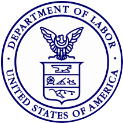Since the start of the COVID-19 pandemic, the U.S. workforce has experienced serious disruption, from the Great Resignation, to Quiet Quitting, and evolving labor policy for gig workers. For the last few years, there has been a significant labor shortage, with the Bureau of Labor Statistics noting that 9.6 million job openings currently sit unfulfilled across the county.1

Within the last two years, many states enacted laws that impact child labor, while some introduced bills that did not advance. Additionally, two federal bills were introduced, proposing certain changes to child labor laws.
This is a state in the United States.
Teens as young as 14 can work in meat coolers, industrial laundries, kitchens, and other environments
Additionally, special work-based learning exceptions allow teens aged 16-17 to work in demolition, roofing, excavation, and power-driven machine operation4
Teenagers aged 16 and older can work in liquor stores7
Teens as young as 14 can bus tables in alcohol establishments
Teens aged 16-17 can work 35 hours a week, including the night shift10
Teens aged 14-15 can work 40 hours a week during the summer
Teens aged 16-18 can work 50 hours a week in the summer.
In neither scenario do minors require parental consent to work11
Exemptions create for hour and time restrictions for teens 14-15
Removes provisions for hour and time restrictions for teens 16-176
Allows parents to sign consent form, allowing teens 16-17 to work more than 30 hours per week14
Creates educational programs in schools with supervised construction work15
Teenagers aged 14-15 no longer need work permits to get a job18
Teens 16-17 could work more than 40 hours per week, and more than 6.5 hours per day during school week12
Teens aged 16-17 could work in logging operations, if employed by a parent8
Teens aged 14-16 could work between 7:00 AM and 9:00 PM, up to 24 hours a week9
Individuals under the age of 14 could work in commercial establishments when school is not in session, but no later than 9:00 PM2
Teens aged 16-17 would be able to work in construction3
Teens aged 14-15 would not need work permits or parental permission to get jobs5
Minors would no longer need to obtain work permits to get jobs13
Minors would no longer need to obtain work permits to get jobs16
Teens aged 16-17 could work until 10:00 PM on school nights, instead of 7:00 PM17
While many of these bills did not advance, other states are considering similar bills in coming legislative sessions, and it is also likely that states that saw their bills fail may simply try again later.
For instance, Wisconsin originally passed a bill in the House and Senate to remove work permit requirements for 14 and 15 year olds, but that bill was vetoed by the governor in 2022 – however, a new bill was introduced towards the end of 2023.19
As labor dynamics continue to drive this legislative trend, it becomes more and more likely that workers’ comp insurers will have to prepare for a greater number of minors among their injured worker claimant populations.
Outside of legally sanctioned labor, there have been significant increases in illegal child labor over the last several years, as documented by the Department of Labor:

increase in children employed illegally by companies since 201820
increase in the number of children illegally working over the last decade21
Evidence demonstrates that younger workers are more prone to workplace injury, which raises questions and considerations for overall worker population safety impacts as more minors enter the workforce.
According to the CDC, young workers have the highest rates of job-related injury.22 The CDC noted that the rate of work-related injuries treated in emergency departments for workers aged 15-24 was 1.5x greater than the rate for all other age groups.22
Meanwhile, the Workers’ Compensation Research Institute (WCRI) found that the risk of accidents is substantially higher at the start of employment, and that the average job tenure prior to an injury for young workers is shorter compared with older workers.23

Limited or no prior work experience
A lack of safety training
Less likely to recognize workplace hazards
Unaware of legal protections
Discomfort voicing safety concerns
May lack the strength or cognitive abilities to perform certain duties
If more minors begin to enter the workforce in significant numbers, increases in the rates of workplace injury are an unfortunate inevitability.
While workers’ comp programs often have strategies in place to manage various special populations, providing care for younger workers comes with some unique differences to account for in terms of legal complexity, indemnity considerations, and medical management.
In a typical claim, the injured worker is an adult who can make their own healthcare decisions and communicate with various stakeholders in the workers’ comp system. However, with minors, the severity of the injury can potentially impact how much a parent or guardian of the worker will likely have to be involved in the claim. A minor laceration or burn requiring first aid may require no parental involvement at all, while a more serious injury would require the parents in both the medical treatment and claims process.
If a parent is involved in a claim, adding an extra stakeholder to the mix can complicate communication.

Considering the wealth of information to share – be it explaining benefits, coordinating care, etc. – there is a higher probability for missed information and missed appointments as communication is now handled via an intermediary.
There are various other, case-by-case factors to consider – for instance, if transportation services are required within a claim, additional accommodations must be made for the parent to accompany the child.
Additionally, most states provide minors with additional workers’ comp protection above the standard benefits given to adults.
For instance, in the case of permanent partial disability or permanent total disability, roughly half the country requires that minors be compensated for future earning capacity, a small loss of income per year based on what could be a 40 to 50 year work career.25 The calculations to find this compensation varies, but because minors often fill lower-wage occupations, the calculation assumes minors would have eventually earned beyond those wages, meaning final payment will be high.
Furthermore, a guardian may be required for the settlement of permanent partial disability or permanent total disability. In a handful of states, all settlements with minors must be approved by the state workers’ comp board, industrial commission, or court system.25

Providing care for adolescents can vary significantly when compared to adults. Younger individuals may be required to visit pediatricians instead of general practitioners, which would require workers’ comp programs to ensure such providers are part of their network. It would also be necessary to make sure pediatricians understand the workers’ comp system, in regards to matters such as coverage, prior authorizations, etc.
And when it comes to pharmacy management, adolescents may not be able to take the same medications that adults can. Drugs intended or approved for adults may not adequately be studied in pediatric populations of different ages, and difficulty measuring outcome measures may be difficult in younger populations.26
Additionally, children can progress rapidly through different stages of development when compared to adults, making pharmacotherapy far more nuanced when compared to adults who have completed their development. In some cases, introducing certain drugs during key developmental stages in life can cause significant long-term health impacts.26
If more minors are allowed to enter the workforce, particularly in more risk-filled fields, it is to be expected that claims populations – and their management – may continue to grow more complex in workers’ comp.

If given work environments see an increase in adolescent workers, it is important to emphasize safety training and to mitigate risks by putting these younger workers in less potentially hazardous positions.
The U.S Department of Labor recommends the following seven recommendations to keep younger workers safe:27
